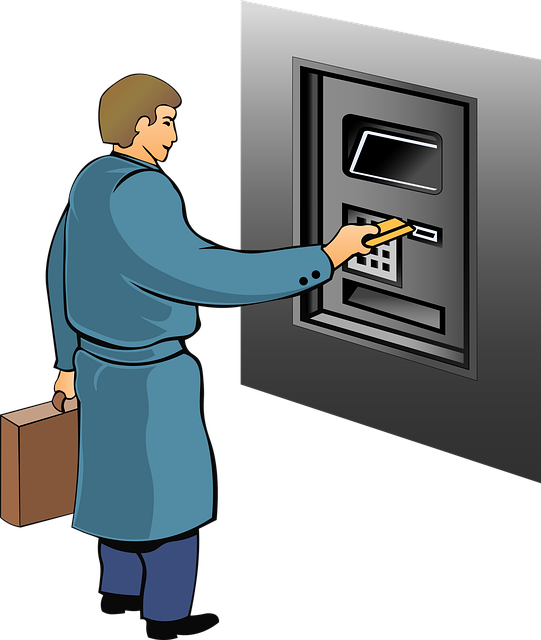Title loans, marketed as quick cash, trap borrowers in debt due to high interest rates and short terms. Bankruptcy offers a way out, though it has drawbacks like credit score impact. Explore Chapter 7 or Chapter 13 bankruptcy options, consult a lawyer, gather documents, and file through a trustee. Post-bankruptcy, rebuild credit and avoid high-interest debts to prevent future financial struggles.
Struggling with a title loan? Discover if bankruptcy can offer a way out. Title loans, while quick cash, often trap borrowers in a cycle of debt. This article guides you through understanding these loans, exploring bankruptcy as an option, and providing a step-by-step plan for navigating the process. Learn how to break free from the financial grip of a title loan and regain control of your future.
- Understanding Title Loans and Their Trapping Nature
- Bankruptcy as an Option: Pros and Cons Unveiled
- Step-by-Step Guide: Navigating Bankruptcy for Title Loan Relief
Understanding Title Loans and Their Trapping Nature

Title loans, often presented as a quick solution for cash emergencies, are secured loans using an asset—typically a vehicle’s title—as collateral. While they might seem like an attractive option for those in desperate need of funds, their trapping nature can ensnare borrowers in a cycle of debt. These loans usually come with high-interest rates and short repayment terms, making it difficult for borrowers to repay on time.
Many folks find themselves caught in a “title pawn” scenario when they lack the immediate means to pay back the loan. Lenders often target individuals who are less financially stable or have limited options for traditional credit. What starts as a small loan can quickly escalate due to mounting interest charges, leaving borrowers in a difficult situation. Understanding these loans and their potential pitfalls is crucial when exploring how to get out of a title loan.
Bankruptcy as an Option: Pros and Cons Unveiled

Bankruptcy can be a potential avenue for individuals struggling to repay a car title loan, offering both advantages and drawbacks when considering how to get out of a title loan. One significant pro is that bankruptcy laws are designed to provide financial relief to debtors, allowing them to shed certain types of debt. This could mean the difference between keeping your vehicle or losing it in the process.
On the other hand, declaring bankruptcy has serious consequences and should be seen as a last resort. It can impact your credit score, making future borrowing more challenging. Additionally, with car title loans, there’s a chance you might lose ownership of your vehicle if you fail to meet repayment requirements. However, an online application process for certain types of bankruptcy can make navigating this difficult situation slightly less daunting. Keeping your vehicle while getting relief from debt is achievable, but careful consideration and guidance are essential when exploring how to get out of a title loan through bankruptcy.
Step-by-Step Guide: Navigating Bankruptcy for Title Loan Relief

Navigating bankruptcy to get out of a title loan can seem daunting, but with a structured approach, it’s possible to find relief. Here’s a step-by-step guide to help you understand the process and make informed decisions.
1. Assess Your Situation: Start by evaluating your financial state and understanding the terms of your title loan. Note down the loan amount, interest rates, and repayment options. The vehicle’s valuation is a crucial factor; ensure you have accurate information to determine if keeping or selling the vehicle is a viable option.
2. Explore Bankruptcy Options: Familiarize yourself with different bankruptcy types, focusing on Chapter 7 or Chapter 13. Chapter 7 can lead to asset liquidation, while Chapter 13 offers a repayment plan. Since title loans are secured by your vehicle, Chapter 7 might not be the best fit as it could result in repossession. Chapter 13 allows you to keep your vehicle and propose a tailored repayment plan based on your income and assets, including negotiating lower interest rates with lenders after bankruptcy.
3. Consult a Professional: Seek guidance from a bankruptcy lawyer or financial advisor who can provide personalized advice. They’ll help you understand the legal implications, potential outcomes, and how bankruptcy will impact your credit score. This step is vital to ensuring you make the right choice for your situation.
4. File Bankruptcy: If you decide to proceed, gather necessary documents and file for bankruptcy through a court-appointed trustee. Be transparent about your assets and debts. During this process, communicate with your lender to discuss potential repayment options or loan modifications that could help you catch up on payments without resorting to bankruptcy.
5. Post-Bankruptcy Repayment: After emerging from bankruptcy, focus on rebuilding your financial health. Stick to your repayment plan if under Chapter 13, and explore long-term solutions like budget planning and debt management strategies to avoid future title loans or high-interest debts.
If you’re burdened by a title loan and exploring options to break free, bankruptcy could offer a potential path to relief. While it’s a significant step with both advantages and disadvantages, understanding the process is key. By following the steps outlined in this guide, you can navigate the complexities of bankruptcy and potentially shed the constraints of your title loan. Remember, seeking professional advice is essential when considering such a decision, especially as it may vary based on your specific circumstances. Learn how to get out of a title loan by empowering yourself with knowledge and taking control of your financial future.






